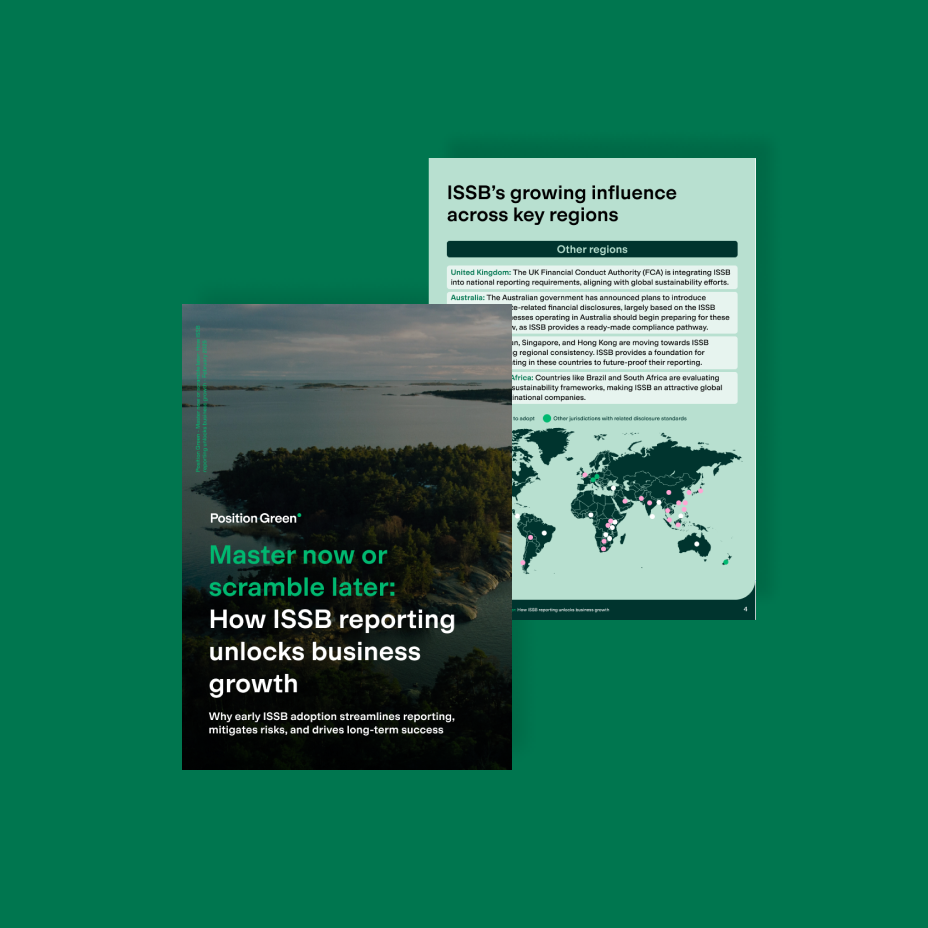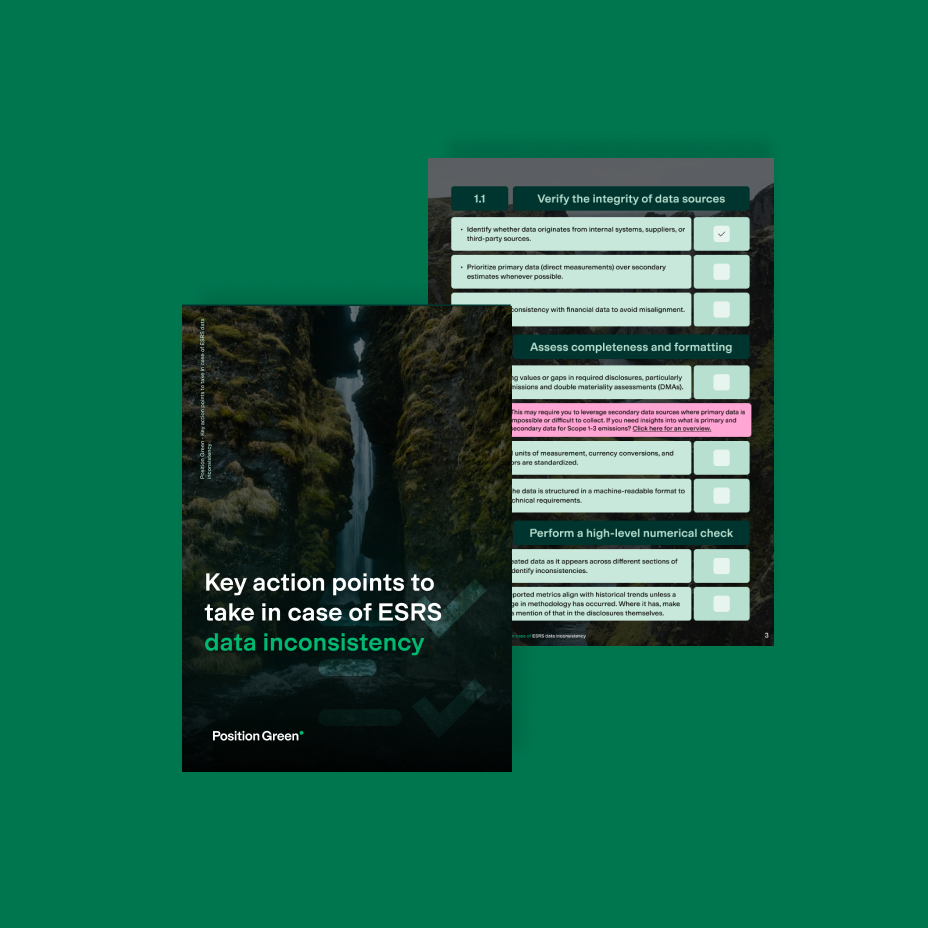Best practices for collecting and organizing your ESRS data
2025 is a pivotal year for sustainability reporting. With the Corporate Sustainability Reporting Directive (CSRD) and European Sustainability Reporting Standards (ESRS) now in full effect, thousands of companies face an opportunity to align sustainability practices with operational and financial success.

For many, this is a daunting process, with unclear rules of engagement and vast amounts of data to consider, not just in your organization, but across your supply chain. This guide is your launchpad to navigating the ESRS requirements and turning compliance into a strategic advantage.
What you’ll learn:
- How to start strong: If it’s your first year tackling ESRS compliance, discover the foundational steps you need to set yourself up for success, from understanding regulations to assessing data systems.
- The power of materiality assessments: Learn why double materiality is the cornerstone of ESRS, offering insights that extend beyond compliance to inform strategy and prioritize resources effectively.
- Centralized data systems for seamless reporting: Explore how robust data platforms can streamline compliance, reduce errors, and create opportunities for operational alignment and cost savings.
Download the guide today and turn 2025 into your launchpad for operational and sustainability excellence.


